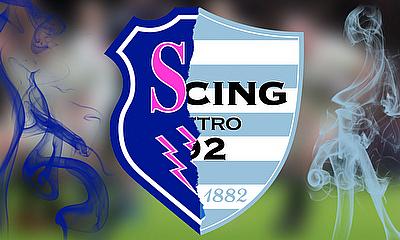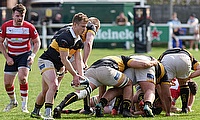Ideas for Championship mergers
In recent weeks the rugby-verse was set aflame by the announcement that the Top 14’s two Parisian clubs Stade Francais and Racing Metro 92 were to merge into one super-club next season.
Although a combination of social media outcry, populist campaigning and the threat of the Stade Francais squad boycotting three of the season’s last four games ultimately put paid to Jacky Lorenzetti’s and Thomas Savare’s grand ambitions, the proposed merger opened up a new question as part of Talking Rugby Union’s continued series on potential reform in the Championship, and National Leagues 1 & 2 – could any clubs currently plying their trade in the English lower leagues form a merger.
First comes the caveat that for any potential merger to take place, there has to be significant financial problems – such as those faced by Stade Francais – before any club, with a loyal and dedicated following as well as assets including a stadium and training facilities would entertain the possibility of being absorbed or merging with another club. With that in mind there does not appear to be any clubs within the existing second and third tier of English rugby which meets this criterion.
Instead therefore, geographical proximity, designed in order to maximise the catchment area of fans, players, sponsorships and other resources for the ‘super clubs’ is the only criteria in which proposals could be made.
In the Championship, there are three options; the first would be to merge Rotherham, Doncaster and Yorkshire Carnegie to create one amalgamated ‘Yorkshire Rugby Club’ which would have access to the entire regions supply of rugby players and be a natural continuation of the regional expansion Leeds Carnegie embarked upon when they re-branded to the ‘Yorkshire’ moniker in 2014.
If the contention between South and West Yorkshire proved too strong however, a second suggestion could see Rotherham and Doncaster merge to form a South Yorkshire Superclub, one that given the two clubs’ combined resources, would easily challenge Yorkshire Carnegie for regional dominance.
Finally, despite the loss of London Welsh to liquidation earlier this season, London Scottish, Richmond and Ealing Trailfinders all remain in the borders of the M25 and could theoretically form another London rugby club and occupy some of the space vacated by Wasps upon the latter’s move to Coventry in 2015.
The picture gets even murkier one division down in National League 1 as the geographical diversity of the league does not immediately illuminate any potential cross-city or cross-regional mergers. The closest geographical connection is Rosslyn Park and Esher although neither have the facilities (3,000 and 2,000 capacity stadiums respectively) to absorb the other and the potential of a Rosslyn Park – Richmond merger would instead be more conducive to a successful amalgamation between clubs.
The other possibility would be a joint venture between Birmingham Moseley and Coventry to bolster semi-professional rugby in the West Midlands. However, given that both clubs are currently performing admirably in the domestic standings (4th and 6th respectively) and have a long-standing rivalry over the Moseley Trophy, this would probably not be a particularly popular idea with fans of either club.
Finally, we reach National League 2 North and South. Unfortunately whilst the criteria or geographical proximity are easily met for any number of combinations of teams at this level, merging clubs would significantly detract from the designed format of the league – i.e. by regional location – and cause an even greater disruption to the players who turn out weekly for their local side.
The only possibility at this level would be to merge both National League 2 North and South together to form one single league and forced the 12 teams in each league to shrink into six. However, not only would this be an unnecessarily draconian method that would take much away from the spirit of the game and the league, it would also be a logistical and bureaucratic nightmare. It is an idea best left alone.
To summarise then, whilst Lorenzetti and Savare put forward an interesting strategy to secure the future of their two clubs, the situation in Paris was unique to the French Top 14 and it is unlikely the circumstances could be replicated here to forced any potential mergers in the lower leagues.
Although a potential second-tier Greater Yorkshire or London rugby club could work in theory, there is as of this moment no impetus to force this change. Elsewhere in tiers three and four, unless the RFU adopted an extreme interventionist program to drastically reshape club rugby at those levels, there does not appear to be any possibility of multi-club mergers in the near future. Let’s leave such schemes to the French.








![Dings Crusaders [pictured in action against Dudley Kingswinford] are unbeaten in 17 games in National Two West Leicester Lions and Worthing battle to valuable victories while Dings pressure sends them top](/images/c-037715/509a4115.jpg)
